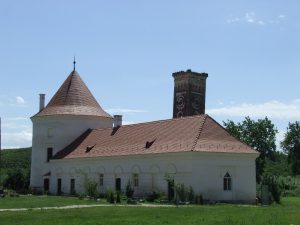A NOBLE RECEPTION?
One of the founders of Monumente Uitate, Cristina Chira, had this to say about the erstwhile aristocracy: “I think a lot of people, especially from the younger generations, look upon the old aristocratic families as examples of breeding and good taste, which are values often missing from today’s society. A great deal of cultural heritage is due to the aristocracy and the middle nobility, they developed and maintained it, and in many cases they themselves were its creators.”
The situation was not always so. True, the aristocrats who crept back home to visit during the Communist period were greeted warmly by local villagers, but Romanians in general were not so fond of those who returned after the regime change or after the turn of the millennium, and there were instances when the returning noblemen found themselves in conflict with the local (even ethnic Hungarian) leaders because the reclaimed chateau now housed some public institution. Farkas Kálnoky and his son, Tibor, returned to Sepsikőröspatak (Valea Crişului) in 1987. While they were at mass, the villager who had given them directions spread the word: the counts are back! Their reception was affectionate, apart from a Securitate car that later tailed them, as we can read in Samu Csinta’s first volume about the Transylvanian aristocracy.
Tamás Barcsay, heir to the princely chateau in Gyalu, spoke about a similar reception in an interview given to Mandiner: “I first went there in 1968. With some of my fellow students from Oxford University I visited the Soviet Union, and on the way back I took them to Gyalu. The regime was still relatively liberal in those days. Plenty of things were still there, and neither the garden nor the chateau was in bad condition. The director welcomed us and showed us around. They assigned me a peasant in a fur hat, and I asked him, ‘Were these oppressive, feudal lords really so terrible?’ And then he spoke about my father in absolutely positive terms. I almost cried. The whole arsenal of Stalinist propaganda was saying that the noblemen oppressed the peasants, but even dedicated Marxist historians stopped writing in this way as the regime approached its end.”

Among Romanians, however, the picture is mixed. Barcsay’s opinion on this is remarkably upbeat: “Not long ago, a Romanian teacher in Bonchida gave her students the task of asking the older villagers what life had been like when the Bánffy counts were landlords. The village had always had a majority of ethnic Romanians, and the students gathered together some surprisingly positive responses. The new generation now realised that what they had been told in the past was not necessarily the truth.”
Farkas Bánffy, by contrast, faced some resistance: “There were those four little local potentates, who can be found in every Romanian village: the mayor, the priest, the cop and the forester. They were not pleased to see me, because I was upsetting their well-oiled system. Once, I had my car rocked by the mayor and the priest together. […] Sometimes I’m even vilified in church by the Orthodox priest, so my neighbours tell me. So we are not the best of friends, but we no longer antagonise each other really. We slowly managed to gain a foothold, and we are on good terms with the neighbours.”
The heirs of the Kemény family, who reclaimed the chateau in Marosvécs (Brâncoveneşti), where literary meetings of the Transylvanian Guild of Fine Arts were once held, came up against objections from the local Hungarians. They were not warmly received either by the director of the neuropsychological institute housed in the chateau, or by the mayor, and even the villagers were worried that the returning lords might want to take back the erstwhile servants’ homes.
Title image: The Kálnoky Castle in Sepsikőröspatak